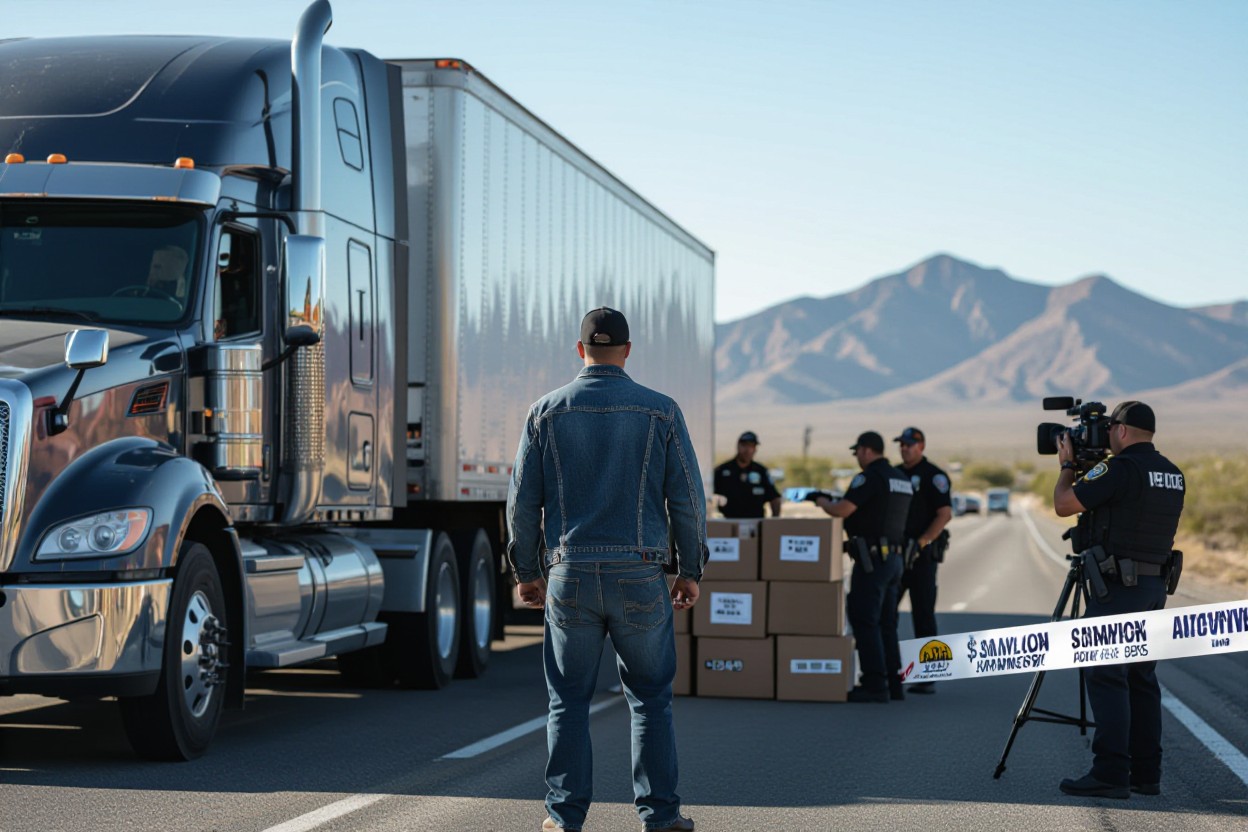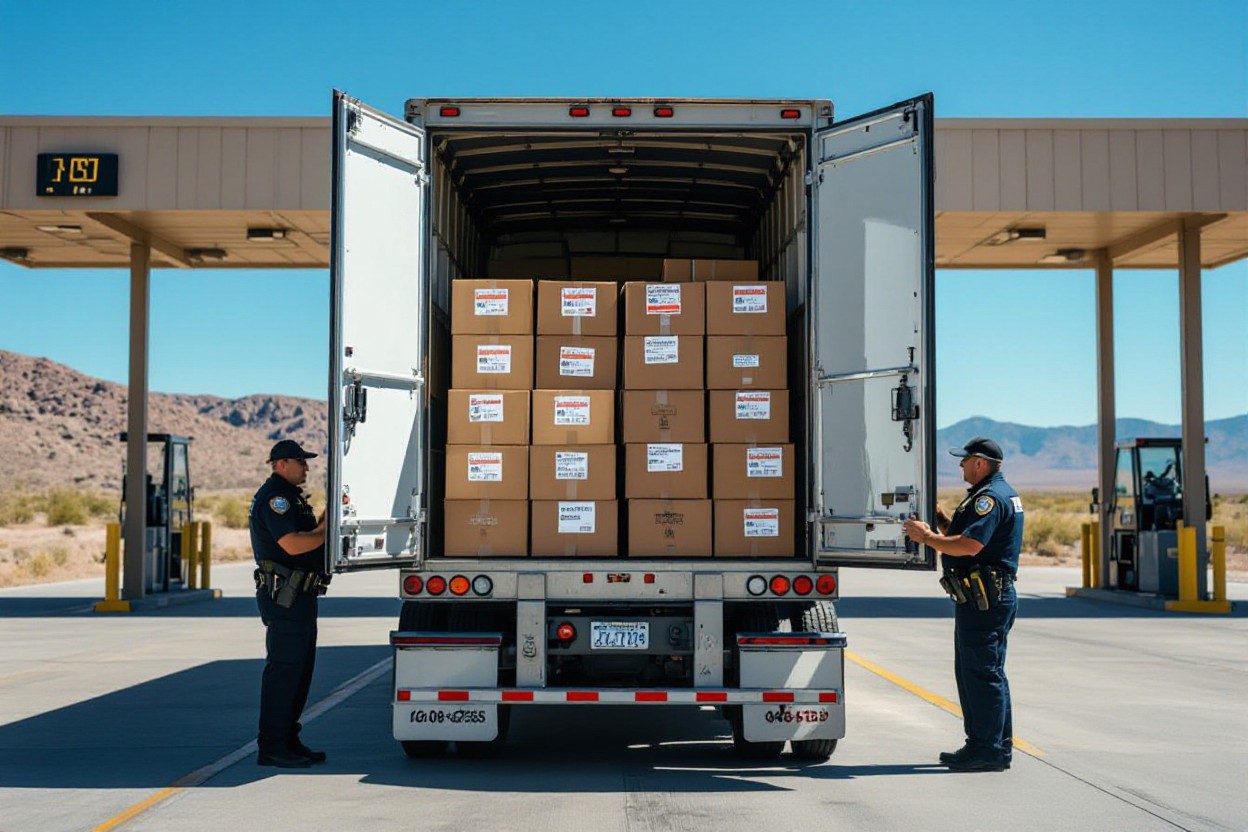
Serendipitously, you may come across news that directly challenges your perception of transportation safety. In this case, 42-year-old Jose Cleofas Cereceres was apprehended for transporting $3 million dollars’ worth of cocaine out of New Mexico. As someone who values understanding the implications of such events, you’ll find this incident a stark reminder of the complexities within the trucking industry. Stay informed and aware as you explore how this arrest could impact regulations and safety standards in freight transport.
Timeline of Events
You will want to understand the sequence leading to the arrest of Jose Cleofas Cereceres. The investigation began when authorities detected suspicious activity in New Mexico. After tracking movements and gathering evidence, law enforcement stopped Cereceres during a routine inspection. The vehicle was searched, revealing $3 million worth of cocaine, leading to his immediate arrest. This timeline highlights how quickly the situation unfolded once officials acted on their intelligence.
Location and Context of the Arrest
The arrest took place in New Mexico, a state known for its strategic position in transportation and drug trafficking routes. You should note the significance of this location, as it poses challenges for law enforcement trying to control illegal substances entering the United States. The region’s extensive highways and proximity to the border make it a common transit point for narcotics traffickers, increasing the importance of vigilant monitoring and inspections by authorities.
New Mexico’s geographical position places it at the crossroads of major interstate highways such as I-25 and I-40, which serve as key corridors for commercial trucking. You should consider how this impacts the volume of cargo being moved daily, making it easier for traffickers to conceal illegal shipments among legitimate goods. The arrest of Jose Cleofas Cereceres underscores the ongoing efforts of local and federal agencies to intercept drug shipments in transit, reflecting the challenges posed by the state’s terrain and infrastructure. Understanding this context helps you appreciate the complexities involved in disrupting narcotics distribution networks within such strategically important regions.
Background and Past Encounters
You might find it important to know that 42-year-old Jose Cleofas Cereceres has had several minor legal run-ins before this major arrest. Although not previously linked to large-scale drug trafficking, past encounters with law enforcement suggest a pattern of risky behavior. These prior incidents, while less severe, set the stage for the significant charges he now faces involving millions in cocaine. Understanding his background offers insight into how such cases develop over time and the escalating nature of criminal involvement within the transportation sector.
The Role of the Trucker Industry in Drug Smuggling
The trucker industry plays a complex role in the movement of illegal substances, including massive amounts of cocaine crossing state borders. As someone engaged with commercial transportation or security, you must consider how easily drug traffickers exploit routine freight operations, hiding contraband among legitimate cargo. Recognizing the vulnerabilities of the supply chain can help you appreciate ongoing law enforcement efforts to detect and prevent these illicit activities while safeguarding the industry’s integrity.
Delving deeper, you see that truckers, unwittingly or otherwise, become a pivotal part of drug smuggling networks due to the vast scope and decentralized nature of freight logistics. The vast number of shipments and routes creates opportunities for traffickers to conceal drugs with minimal scrutiny. From hidden compartments in trailers to manipulating shipping documents, traffickers use sophisticated tactics, making it challenging for authorities to spot illicit cargo. Your awareness of these tactics and cooperation with regulatory bodies can improve detection rates and reduce the trucker industry’s exploitation by criminal enterprises.
Methods Used to Detect the Cocaine
You’ll find that law enforcement used advanced technology like X-ray scanners and K-9 units specially trained to detect narcotics. These methods allow officials to inspect trucks thoroughly without causing delays. In this case, the hidden compartments within the truck were revealed during a routine inspection, leading to the discovery of the $3 million worth of cocaine. Such detection techniques are imperative for intercepting drug trafficking before it reaches cities and communities.
Coordination Between Agencies: Local vs. Federal Efforts
The arrest involved seamless cooperation between local police, state authorities, and federal agencies such as the DEA and Customs. By sharing intelligence and resources, these agencies coordinated their efforts to monitor, intercept, and apprehend the suspect. This collaborative approach enhances your understanding of how multiple enforcement bodies work together to disrupt major drug operations efficiently and ensure public safety.
The coordination between local and federal agencies in this case highlights a multi-layered strategy against drug trafficking. Your role in supporting law enforcement can begin with staying informed about how these partnerships function. While local officers often handle initial traffic stops and inspections, federal agencies provide expertise and additional resources such as forensic analysis and nationwide intelligence networks. The combined efforts create a stronger front, ensuring that no single element goes unnoticed and that suspects face comprehensive investigations resulting in arrests like that of Jose Cleofas Cereceres.
The Economic Impact on New Mexico
The seizure of $3 million worth of cocaine in New Mexico serves as a stark reminder of how drug trafficking profoundly affects your local economy. The influx of illicit funds distorts legitimate markets and burden public resources, from law enforcement to healthcare. This illegal trade undermines economic stability and hampers community development efforts you value. By disrupting such drug shipments, authorities help protect your economy from the corrosive effects of this underground trade, promoting safer, more prosperous communities for you and your neighbors.
Trends in Drug Trafficking and Law Enforcement Adaptations
You should be aware that drug trafficking routes and methods constantly evolve, requiring law enforcement agencies to adapt. The arrest of Jose Cleofas Cereceres highlights ongoing efforts to combat innovative smuggling tactics. As traffickers leverage new technologies and shifts in transportation logistics, your local and federal authorities are improving surveillance, intelligence sharing, and inter-agency cooperation to stay ahead in this fight.
Over recent years, drug traffickers have increasingly used sophisticated concealment techniques and diversified their routes to avoid detection. To counter these trends, law enforcement has invested in advanced technologies such as AI-driven analytics, enhanced scanning equipment, and improved data integration across borders. For you, this means agencies are more capable than ever of intercepting large shipments like the one involving Jose Cleofas Cereceres. These adaptations not only disrupt the supply chains but also aim to reduce the harmful social and economic impacts posed by drug trafficking within your community.

Best Practices for Cargo Security
To protect your freight from theft or tampering, implement thorough security measures such as using tamper-evident seals, verified locking systems, and GPS tracking devices. Regular inspections before and after loading ensure cargo integrity. You should also restrict access to authorized personnel only, maintain clear records of the chain of custody, and stay vigilant during transit. These practices help you identify any irregularities early and enhance overall cargo safety.
Regulatory and Training Recommendations
Adhering to regulations helps you maintain compliance and reduce risks. Stay informed about federal and state transportation laws relevant to cargo security. Providing comprehensive training to your team on recognizing suspicious behavior and proper handling procedures ensures everyone understands their responsibilities. Ongoing education and certification programs can significantly improve your operational safety and security standards.
Beyond basic compliance, investing in regular training empowers you and your staff to respond effectively to potential threats. Familiarize yourself with industry guidelines from organizations such as the Transportation Security Administration (TSA) and the Department of Transportation (DOT). Developing a culture of vigilance and accountability encourages prompt reporting and resolution of security concerns. Emphasizing continuous learning keeps your operations aligned with evolving regulations and emerging security technologies.
Summing up
Conclusively, you should recognize the serious consequences that arise from involvement in drug trafficking, as demonstrated by the arrest of 42-year-old Jose Cleofas Cereceres for hauling $3 million worth of cocaine out of New Mexico. This case highlights the vigilance required by law enforcement and the impact such crimes have on communities. Understanding the gravity of these offenses can help you appreciate the efforts taken to combat drug smuggling and the legal repercussions faced by individuals engaged in such activities.



